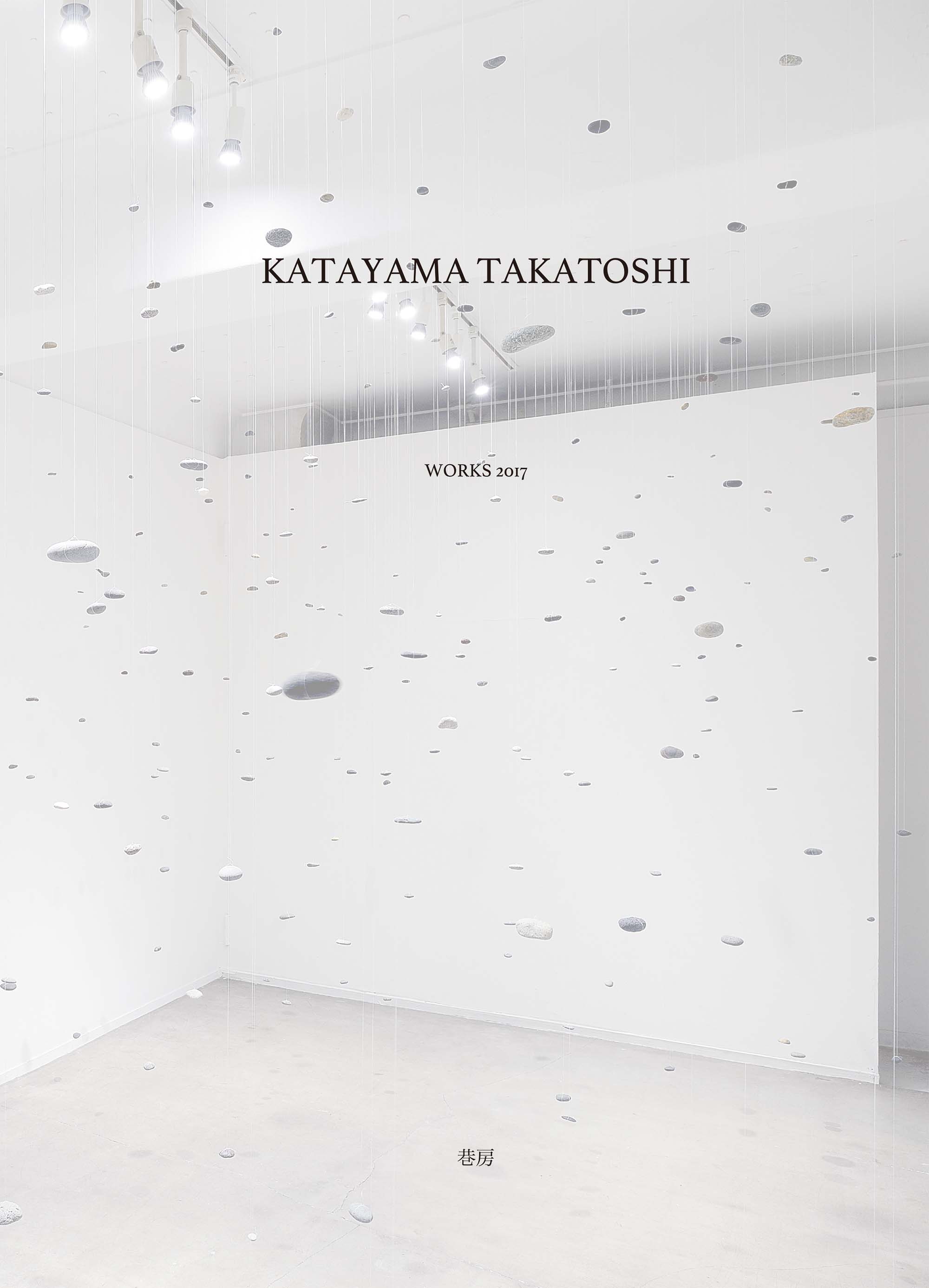KOBO, Tokyo
19 Jan 2017 - 21 Jan 2017

White Memories
The “Okuno Building” (built in 1932 by Ryoichi Kawamoto) stands on a side street off the hustle and bustle of Ginza Dori, giving off the distinct feel of the Show Era. It has been a while since I last entered this building. Memories carved out of times past are burrowed in every corner of its interior.
A young woman, camera in hand, is taking photographs of the staircase, the pillar covered in carpeted tiling, and the walls.
I slip past her to quietly climb the stairs.
The exhibit is on the third floor and the basement.
I start on the third floor.
I look around the room which is painted uniformly in white. By the entrance is a piece with deck screws across its base. A ceramic ship sits atop a low wooden base. In the back there is a disc placed upon a metallic circle, which is ceramic , too . These three pieces are the large ones. There are two other pieces, both small boats, placed by the window. Stirring waters, rousing waves and blowing winds; this installation invokes memories of a ship gliding over ocean waters. There is no title indicated.
I start with the piece with the ship sitting atop the wooden base, whose head and stern flow into one another as part of an acute angle.
It glides across the ocean bathed in sunlight. The protrusions on the ship’s body each represent a happening from the past.
Each of the happenings simultaneously connects intermittently to the surface of the disc positioned behind them, yet remains in juxtaposition. Each one, a happening from the past. The abundant plasticity of ceramics makes it a perfect choice to express this imagery. Painful life events, as though healed though the passage of time, are embraced by the white clay powders. Layers of imagery from his memories float out into a white space. Putting ceremonial usage aside, they say that white is the color most preferred by the Japanese. “White” defuses expression and is also a medium that neutralizes the ups and downs. Though it suggests the existence of those happenings already past, it serves also as a harbinger of things to come and portends the end of others. The “white” of ceramic clay is all those things. It is the water that allows us to consider the origins of time immemorial. It is memory infused with the ocean and water.
This space is the primal scene of memories through which the artist has lived.
After, I descend to the other floor.
Through the door spreads a space that appears to be floating in the deep sea. Strings of small pebbles strung together are hung randomly from the ceiling. They are floating memories in the deepest part of our consciousness. There, time passes tranquilly. The pebbles float above, hinting at the existence of happenings past. Under the lights of the room, the pebbles appear white. As though the focus was on those unearthed memories. It was there that the image of all the many happenings taking cover under this “white” memory was born.
I stood there for quite some time.
There are definitely things that exist in this world that do not loudly assert their presence.
Each happening, accompanied by a variety of images, exists quietly in hushed tones and breaths.
We all look for things that support our life paths and at times lose sight along the way. And then we realize that the minutiae with their small hushed breaths are exactly what has supported us all along. Deep within our consciousness, the minutiae turns into a buried memory. As light is shed on the primal source and water collects around it, “white” appears as the medium which elucidates its presence.
Antonio Lucci, the Italian philosopher said that “Memory itself is art and represents the union of multiple categories of art. In ancient Greek mythology, the Goddess of Memory, Mnemosyne, is the mother of the Muses, which shows, in one sense, that the Greeks clearly understood this matter.”
Memory is not something that leaves one specific impression in the past. It constantly springs forth and is characterized by being reconfigured upon retrieval. It also expounds the present and transitions while projecting into the future.
Takatoshi Katayama has given considerable thought to how memory, the primal source of much art, should circle into our field of vision. His deliberate technique allows us to realize the shape and form of memory in a quietly thoughtful way. This is Katayama’s own exposition and at the same time, something we have all been searching for.
Feeling purified, I exited the building.
Dusk had fallen; I was surrounded by a winter darkness.
Hidekazu Izui, (Former Chief Curator of The Museum of Modern Art , Saitama)